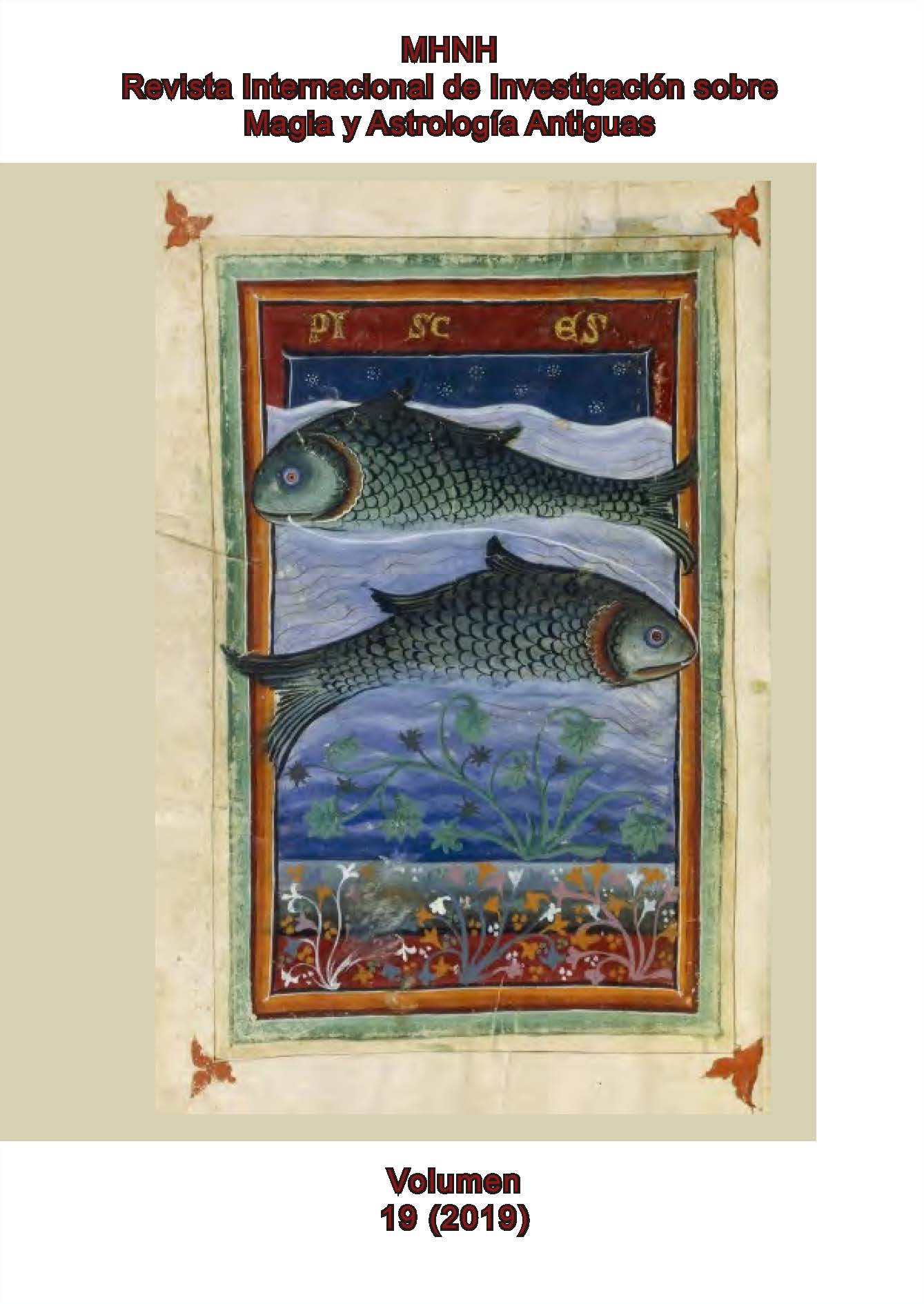Reflected in Heaven, Part Two: (a) Ovid’s Evidence for a Motif, Shared by Rome and Jerusalem, of Material Features of the Metropolis of the Respective People Being Reflected in a Constellation in Heaven; (b) the Belief that Features of the Face of the Moo
DOI:
https://doi.org/10.24310/mhnh.vi19.15411Keywords:
Constellations, Pleiades, Cassiopeia, Eternal City, Jerusalem, Rome, Taurus, Maia, Bona Dea, Ovid, Aratus, De facie, Araunah, Divinatory LiversAbstract
This is Part Two of a study in whose Part One, we considered how Isaiah 49:16 (Jerusalem’s walls being engraved as though on the palms of the hands of God in the sense that Jerusalem is always remembered by Him) was interpreted (as shown by Wiesenberg) by early medieval exegesis, and arguably also by Isaiah, in relation to the W shape of the constellation Cassiopeia (cf. al-Kaff ‘the hand palm’ in Arabic). It is the same shape of the proto-Hebrew initial letter of Shalem, Jerusalem’s old name. Here in Part Two, we consider a parallel from ancient Rome, this time in relation to another constellation, the Pleiades. The traditional date, April the 21st, of the founding of Rome, corresponds to the rise of the Zodiac sign Taurus, and the rise of the Pleiades (seven as the canonical Seven Hills of Rome, even though these were not the same as Rome’s hills at her earliest beginnings). The Servian Wall was probably so designed as to enclose seven hills corresponding to the Pleiades. Maia in particular was the same as the Roman goddess Bona Dea, but their being identical was a well-kept secret. Maia was Rome’s secret name. Ovid, Vinci and Maiuri have argued, was punished with exile while he was busy writing Book Six of the Fasti, because in Book Five (about the month of May) he broke a taboo, and mentioned the Pleiades and especially Maia in connection to the foundation of Rome. This insight enables a better understanding of the episode of Publius Clodius Pulcher’s cross-dressing at a ceremony for women alone, which caused the pontifex maximus, Julius Caesar, to repudiate Pompea, his wife. We propose that there was in antiquity a motif by which, a people would consider its metropolis (its orography in the case of Rome, the city walls in Jerusalem’s) as being reflected in heaven in a constellation. This was comforting, as the eternal city would endure as long as the irmament. The motif of a city having seven hills was also applied to cities including Constantinople and Jerusalem. We consider how the rabbinic homiletic work Pirqe de-Rabbi Eliezer, when it describes Jonah sightseeing underwater, refers to Jerusalem standing on seven hills. A Roman bronze liver has on it a map of heaven. Features of the Earth were believed to be reflected in heaven in the lunar mirror hypothesis: the spots of the Moon were believed by some (Plutarch
referred to Clearchus), to be reflections of Earth’s lands, and, as Philip Stooke has cogently shown, this influenced medieval mapmaking in the Islamic world: the southern tip of Africa was drawn with a bifurcated contour because of a feature of spots on the face of the Moon.
Downloads
Metrics

Downloads
Published
How to Cite
Issue
Section
License
This work is licensed under a Creative Commons Attribution-NonCommercial-NoDerivatives 4.0 International License.
All contents published in MHNH. Revista Internacional de Investigación sobre Magia y Astrología Antiguas are protected under the Creative Commons Attribution-NonCommercial-ShareAlike 4.0 International (CC BY-NC-SA 4.0) license. All about this license is available in the following link: <http://creativecommons.org/licenses/by-nc-sa/4.0>
Users can copy, use, redistribute, share and exhibit publicly as long as:
- The original source and authorship of the material are cited (Journal, Publisher and URL of the work).
- It is not used for comercial purposes.
- The existence of the license and its especifications are mentioned.
There are two sets of authors’ rights: moral and property rights. Moral rights are perpetual prerogatives, unrenounceable, not-transferable, unalienable, imprescriptible and inembargable. According to authors’ rights legislation, MHNH. Revista Internacional de Investigación sobre Magia y Astrología Antiguas recognizes and respects authors moral rights, as well as the ownership of property rights, which will be transferred to University of Malaga in open access. The property rights are referred to the benefits that are gained by the use or the dissemination of works. MHNH. Revista Internacional de Investigación sobre Magia y Astrología Antiguas is published in an open access form and it is exclusively licenced by any means for doing or authorising distribution, dissemination, reproduction, , adaptation, translation or arrangement of works.
Authors are responsable for obtaining the necessary permission to use copyrighted images.






